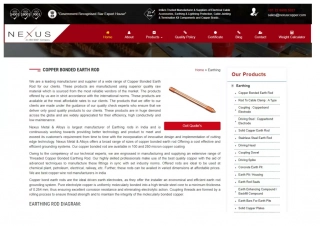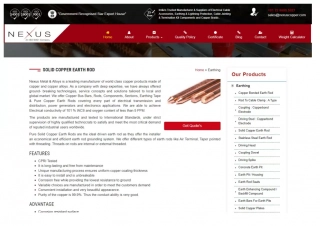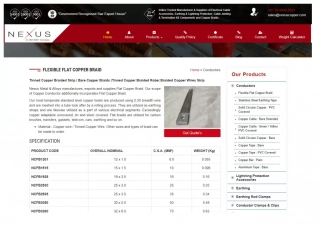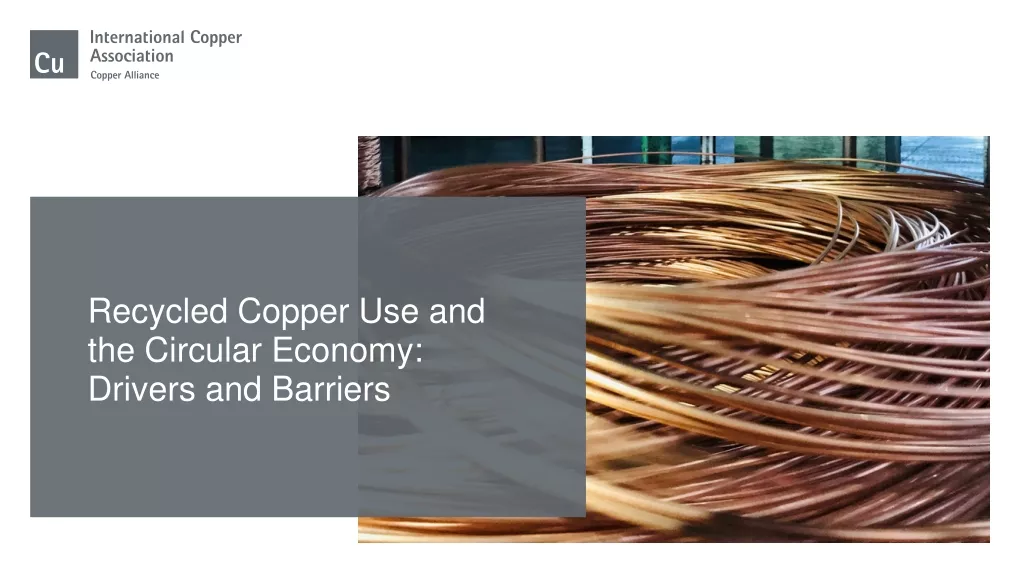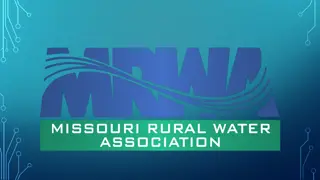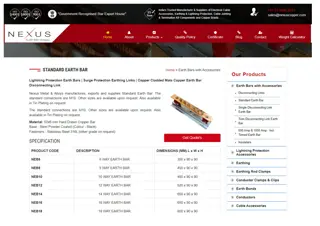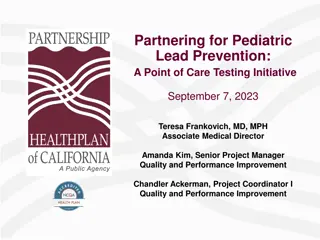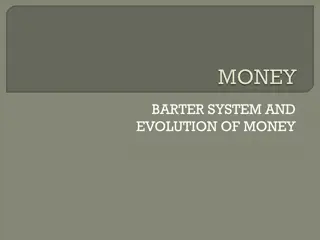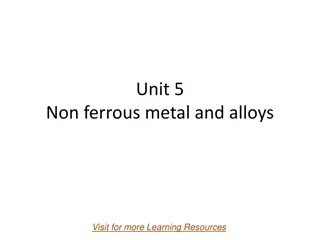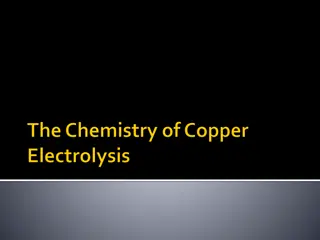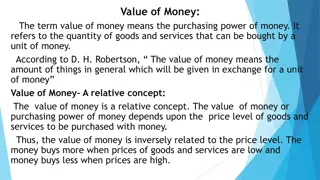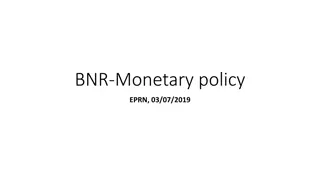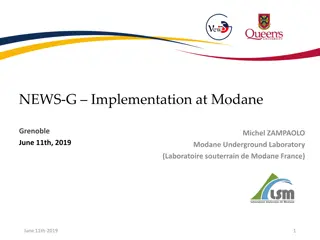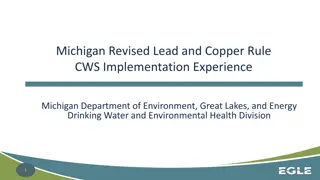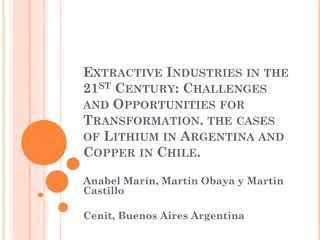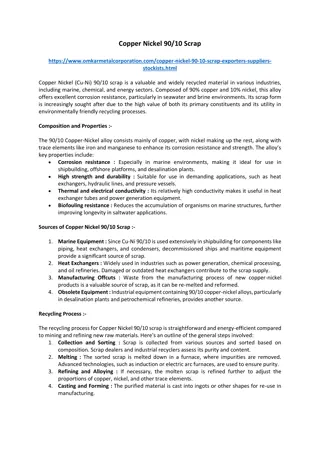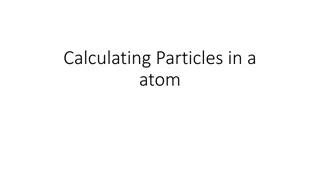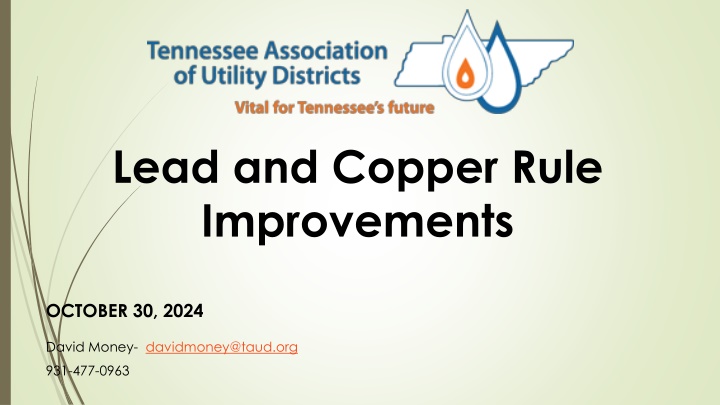
Lead and Copper Rule Compliance Guidelines
This article provides detailed information on the Lead and Copper Rule improvements, compliance deadlines, and necessary actions for public water systems (PWS) between 2024 and 2027. Learn about the proposed rules, primacy extension, required inventories, and compliance requirements, helping PWS entities navigate the regulatory landscape effectively.
Uploaded on | 1 Views
Download Presentation

Please find below an Image/Link to download the presentation.
The content on the website is provided AS IS for your information and personal use only. It may not be sold, licensed, or shared on other websites without obtaining consent from the author. If you encounter any issues during the download, it is possible that the publisher has removed the file from their server.
You are allowed to download the files provided on this website for personal or commercial use, subject to the condition that they are used lawfully. All files are the property of their respective owners.
The content on the website is provided AS IS for your information and personal use only. It may not be sold, licensed, or shared on other websites without obtaining consent from the author.
E N D
Presentation Transcript
Lead and Copper Rule Improvements OCTOBER 30, 2024 David Money- davidmoney@taud.org 931-477-0963
LCRI- Proposed Rule Published November 30, 2023 Final rule issued 10/08/24 Lead and Copper Rule (LCR) 1991, 2001, 2007 1991 16 Oct. 2024 30 Nov. Oct. 2027 LCRR effective December 16, 2021. PWS must comply with rule on October 16, 2024 PWS must comply with LCRI in three years~ November 2027. And certain provisions of the LCRR in interim period of October 2024- October 2027.
LCRI and Primacy Extension What do PWS have to comply with and when? The LCRI will delay implementation of many parts of the LCRR. TDEC has received an extension for adopting the LCRR/LCRI Now that the LCRI is finalized (October 08, 2024) TDEC will begin to adopt rules and must complete primacy application by Dec 2025. EPA will have primacy in this interim period.
Lead and Copper Rule Revision https://www.tn.gov/environment/program-areas/wr-water-resources/water-quality/drinking- water-redirect/lead-and-copper-rule.html
LCRR compliance between 2024-2027 PWS develop and submit LSL inventory by October 16, 2024 PWS owned and customer owned, 4 categories lead non-lead (any service installed after July 1988) lead status unknown Galvanized requiring replacement (GL is or ever was downstream of a lead service line) Inventories to be made available to public can use street name of block number >50K available online. All systems note availability in CCR. Update inventory annually to reflect removals or verification of unknowns PE to customers served by LSL, GRR and Unknowns Provide Tier1 PN for Action Level Exceedences (15 ppb)
What do PWS have to comply with between now and 2027? 141 84(a) (1)-(6) Develop Service Line Inventory, report and update on schedule determined by the state( 141.90 e) 141.84(a)8-Inventory must be made publicly accessible- >50k online 141.84(a)9-if no Unk, GRR or lead system may use statement in leu of providing inventory to public 141.84(a)10 statement of inventory availability must be provided in the CCR report.
What do PWS have to comply with between now and 2027? 141. 85 (e)- Notification to customers with lead, GRR and unknowns within 30 days of inventory completion and annually thereafter and to new customers until there is no lead, GRR, Unk. ( Nov 15) 141.90 ( e) (13)-Systems with lead service lines , Annually Certify to the state that the PWS has complied with the customer notification requirements of 141.85 e. providing the public notice and educational material to customers with lead GRR and Ukn. 141.201(c) (3)- A copy of the notice must also be sent to the primacy agency and the Administrator (as applicable) in accordance with the requirements of 141.31(d).
What do PWS have to comply with between now and 2027? 141.202(a (10)- Provide Tier1 PN for Action Level Exceedences (15 ppb) 141.31(d) For Tier 1 notices for a lead action level exceedance, public water systems must provide a copy of any Tier 1 notice to the Administrator and the head of the primacy agency as soon as practicable, but not later than 24 hours after the public water system learns of the violation or exceedance.
EPA Final Lead and Copper Rule Improvements Major Changes include Baseline inventories development Validation of non-lead status services (7yrs) Identify all unknowns and Remove all lead, GRR (10yrs) Revised Lead P90 AL of 10 ppb Replacement plans if Lead, GRR or Unk New Tier Designations Revised Sample Siting Plans Corrosion Control Treatment Changes Tap Sampling Procedures Public Education and Transparency Provisions Distribution Site assessment samples > 10 ppb Lead Sampling of Schools and Childcare Facilities CCR reporting changes
LCRI Baseline Service Line Inventory Requires water systems to develop an updated initial service line inventory, called the LCRI baseline inventory, which would be due by the compliance date of the LCRI (i.e., 3 years after the final LCRI is published). October 2027 The proposed LCRI would require water systems to review records for information on connector materials and include lead connector materials in the LCRI baseline inventory. System must consult records and records of inspections. All connectors are to be classified as Lead Replaced lead Never lead Unknown No connector Present Update inventory annually make customer notifications annually (lead, GRR unknowns) Identify all service lines and connectors of unknown material by the replacement deadline. ( 10 years after final rule)
Connectors must be included in baseline inventory Connector, also referred to as a gooseneck or pigtail, means a short segment of piping not exceeding three feet that can be bent and is used for connections between service piping, typically connecting the service line to the main. For purposes of subpart I, lead connectors are not considered to be part of the service line.
Validation of not lead status Must develop a validation pool of non-lead sites for inventory validation. To include All non lead service line inventory that were determined via a method other than Records used to develop the inventory Visual inspections of at least two points( excavation, meter box or inside home or were lead or GRR that was replaced) From this pool, system must randomly select a % of sites to conduct a multipoint physical validation of at least two points. Size of validation pool Number of validations required <1,500 ............................. ..20 percent of validation pool. 1,500 to 2,000 .................. 322. 2,001 to 3,000 .................. 341. 3,001 to 4,000 ...... .351. 4,001 to 6,000 .................. 361. 6,001 to 10,000 .... .371. 10,001 to 50,000 381. >50,000 .............................384. must be completed within 10 years of final rule pub.(7yrs-2034)
Replacing all Lead, GRR service lines within 10 years (2037) Within 10 yrs. systems must replace all Lead, GRR and unknowns under their control, unless the replacement would leave in place a partial lead service line. ( cumulative annual average of 10%) extended time frame allowance for systems that must replace more than 3.9 % 39/1000 lines per year. Pitcher or POU filters ( six months) must be provided to customers after a LSL replacement PWS must offer to sample the tap of customer between 3 and 6 months after the replacement.
How does the proposed LCRI define under the control of the water system? The LCRI requires water systems to replace lead and GRR service lines, and any lead connectors encountered, that are under the control of the water system. EPA is proposing to treat a service line and lead connector as under the system s control wherever a water system has adequate access (e.g., legal access, physical access) to conduct full service line replacement or replacement of the lead connector. The LCRI requires the water system to identify in its service line replacement plan any State or local laws or water tariff agreement requirements pertaining to its ability to gain adequate access. TCA 7-35-401(c) System would be required to make a reasonable effort to obtain property owner consent. A reasonable effort includes a minimum of at least four attempts to engage the customer using at least two different methods. If the water system is unable to obtain customer consent when required, the water system would not be required to conduct full service line replacement because, under those circumstances, the full service line would not be under the control of the operator of the system.
New 90th % 10 ppb Action level exceedance 24 hour Tier 1 public notice Public Education and outreach no later than 60 days after end of each tap sampling period Revert to Standard monitoring every 6 months Evaluation of CCT- install or re-optimize Systems that exceed the Lead AL 3 times in 5 years must; Provide filters to all customers and test the tap water of any customer served by lead, GRR or an unknown service line upon request.
Lead Service Line replacement Plan For systems with lead, GRR or unknown Must be submitted by ~October 2027 and made publicly accessible Strategy to prioritize replacement of LSL- most vulnerable populations, disadvantaged communities. Strategy for determining status of unknowns Procedures to contact customers and conduct full LSL replacement Procedures to notify customers to flush lines Customer outreach information , pitcher filters for six months funding strategy to assist customers with customer LSLR Citation of any state or local laws that affect ability to conduct full LSLR
New Tier designations T1- Single family structures with premise plumbing made of lead or served by LSL T2- Buildings including multi-family residences with premise plumbing made of lead or served by LSL T3 Single Family structures that are served by a lead connector or galvanized service line or premise plumbing ever downstream of lead.) T4- Single family structures with premise plumbing containing copper pipes and lead solder installed before the states lead ban (July 1988). T-5 Sites that are representative of sites commonly found throughout the system.
Lead and Copper Sample Siting Plans PWS revise and submit Revised Sample siting or monitoring plans based on LSL inventory by the start of a systems first monitoring period after October 2027 Must include Highest Tier sites first ( LSL) Must reevaluate plan based on inventory pool updates Must include Water Quality Parameter Monitoring Locations LCRR sample siting plans are much more comprehensive Wide mouth bottles Customer notification language Ist and 5th liter samples for lead service lines Systems with Lead, GRR or unknowns will revert to standard monitoring
Distribution System and Site Assessment (DSSA) Triggered when any individual sample result >10 ppb Step 1- Within 5 days collect a WQP sample within 0.5 miles of the customer, same pressure zone, same main size. Add site to WQP monitoring plan. Step 2-within 30 days collect follow up samples for lead. May collect additional samples ( i.e. 5th liter or sequential ) to help identify plumbing contribution to lead. Results are not used for P90 calculations. Step 3 within 60 days of the end of the monitoring period, report findings and cause if known. Make recommendation for corrective action if water quality related.
Corrosion Control Treatment (CCT) changes Eliminates calcium carbonate equilibrium as a recognized CCT Specifies *orthophosphate if a phosphate is used for CCT exceed the 10 ppb action level If you are not providing CCT must install CCT If you are providing CCT you must re-optimize
Sampling at Schools and Childcare Facilities Excludes building built after July 2015, CWS develop lists of schools and childcares, provide communication about risks of lead annually beginning in October 2027. Conduct sampling of elementary schools (k-6) and childcares one time during the first five years. 2027-2032 At least 20%/year. After 2032 sample any that request it. (follow 3ts sampling protocol 8-18 hr. stagnation 250 ml sample. 5 samples per school , 2 samples per child -care facility- rule specifies locations Results not included in 90th calculation and must be reported to the facility, TDEC and the local and state Health Departments. State can waive facilities from the first 5 year sampling requirement if the school or childcare was tested under the (WIIN Grant after Jan 2021).
Water Quality Parameters All systems > 50,000 All systems that exceed the Action Level 10 ppb All systems > 10,000 that are not providing OCCT The number of entry point and tap samples based on size. All WQP monitoring site are to be monitored at least annually, two 6-month periods initially. Calcium stabilization is being eliminated as a CCT along with the associated WQP Calcium hardness , conductivity and temp.
Public Education and Notifications Revised Health Effects Language to be used in all customer notifications Any customer with L&C tap level results are to be notified of results within 72 hours Initial and Annual notices to customers with LSL, Galvanized and unknowns. To include info on LSL replacement and funding opportunities. Tier 1 24 hour notice to all customers if the 90th % 15ppb Action Level is exceeded until October 2027 Tier 1 24 hour notice to all customers if the 90th % 10ppb Action Level is exceeded after October 2027
Increased transparency Revised health effects language for customer notifications CCR to include revised language and includes 90th % compliance value, the range of lead results and number of samples above 10 ppb. CCR information on how to obtain copies of all results. CCR update on LSL inventories and availability for viewing. Tier 1 public notice (24 hours) for lead 90th percentile 10 ppb exceedance . 72 hour notice of customer results regardless of values
PWS action needed to comply with LCCR / LCRI 2024-2027 Provide customer notices and delivery certification for Lead, GRR and Unknowns by November 15, 2024. and annually thereafter by July 1. Begin work on Baseline Inventory(add connectors status) Submit to state ~October 2027 Continue to identify unknowns and replace lead and GRR. Develop Lead Service Line Replacement Plan (if you have lead, GRR or unknowns), and submit to state ~October 2027 Develop Revised LCR sampling plan and submit to state ~October 2027 Develop lists of childcare facilities and Schools constructed prior to July 2015 and submit to state ~October 2027
Recommended Actions Engage Customers for assistance in identifying service line material. Eliminate as many lead, GRR and unknowns as soon as possible. Begin evaluating verification requirements Develop transparency provisions- web sites etc. Monitor water quality throughout distribution (develop baseline) Conduct additional exploratory monitoring Adopt lead level goals (0-10 ppb?) Set water quality goals for distribution Evaluate CCT use EPA OCCT guides and templates. Optimize for corrosion control Contact state and evaluate any treatment or chemical changes that might impact OCCT.
Funding is available lead line replacement galvanized line replacement The Bipartisan Infrastructure Law (BIL) contains a historic $15 billion in dedicated funding through the DWSRF for LSL identification and replacement. The BIL also provided $11.7 billion over five years to enhance DWSRF base funding. American Rescue Plan (ARP) TN is dedicating $1 billion of non-competitive funds for water and wastewater projects The WIIN Voluntary School and Child Care Lead Testing and Reduction Grant Program provides funding to States for lead testing and remediation in schools and child care facilities. This funding is for States, not water systems. Contact TDEC SRF or SWIG staff https://www.tn.gov/content/tn/environment/program-areas/wr-water-resources/srfp/srf-home/i-need- funding/funding-dw-projects.html https://www.tn.gov/environment/arp.html
The EPA Guidance for Developing and Maintaining a Service Line Inventory. Released August 4, 2022. https://www.epa.gov/ground-water-and-drinking-water/revised-lead-and-copper-rule Provides best practices for inventory development and communicating information to the public. Includes a template for water systems, states, and Tribes to use or adapt to create their own inventory. Contains case studies on developing, reviewing, and communicating about inventories. Highlights the importance of prioritizing inventory development in disadvantaged communities and where children live and play.
LCRI Resources EPA LCRI site https://www.epa.gov/ground-water-and-drinking-water/lead-and-copper-rule-improvements TDEC Lead and Copper Rule Web site https://www.tn.gov/environment/program-areas/wr-water-resources/water-quality/drinking-water- redirect/lead-and-copper-rule.html https://www.lslr-collaborative.org/preparing-an-inventory.html https://www.asdwa.org/wp-content/uploads/2019/08/ASDWA_Developing-Lead-Service-Line- Inventories.pdf https://www.awwa.org/Resources-Tools/Resource-Topics/Inorganic-Contaminants/Lead https://www.blueconduit.com/lcr-revisions

